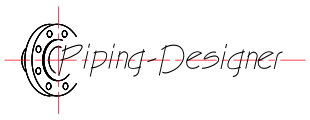Ekman Number
Ekman Number formula |
||
|
\( Ek \;=\; \dfrac{ \nu }{ 2 \cdot \omega \cdot l_c^2 }\) (Ekman Number) \( \nu \;=\; 2 \cdot Ek \cdot \omega \cdot l_c^2 \) \( \omega \;=\; \dfrac{ \nu }{ 2 \cdot Ek \cdot l_c^2 }\) \( l_c \;=\; \sqrt{ \dfrac{ \nu }{ 2 \cdot \omega \cdot Ek } }\) |
||
| Symbol | English | Metric |
| \( Ek \) = Ekman Number | \( dimensionless \) | \( dimensionless \) |
| \( \nu \) (Greek symbol nu) = Fluid Kinematic Viscosity | \(ft^2 \;/\; sec\) | \(m^2 \;/\; s\) |
| \( \omega \) (Greek symbol omega) = Angular Velocity of the Rotation System | \(deg \;/\; sec\) | \(rad \;/\; s\) |
| \( l_c \) = Characteristic Length (Scale of the System) | \(ft\) | \(m\) |
Ekman number, abbreviated as Ek, a dimensionless number, used in fluid dynamics to describe the ratio of viscous forces to Coriolis forces in a rotating fluid system.
Ekman Number Interpretation
Low Ekman Number (Ek << 1) - Coriolis forces dominate over viscous forces. This is typical in large scale geophysical flows, like oceans or atmospheres, where rotation (Earth's spin) strongly influences fluid motion. It leads to phenomena like Ekman spirals, where velocity changes with depth due to the balance of friction and rotation.
Intermediate Ekman Number (Ek ≈ 1) - Viscous and Coriolis forces are comparable, leading to a transitional regime where both effects significantly influence the flow.
High Ekman Number (Ek >> 1) - Viscous forces dominate over Coriolis forces. This occurs in systems with high viscosity, slow rotation, or small length scales, where friction plays a larger role, and rotational effects are less pronounced.

